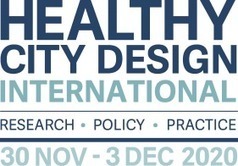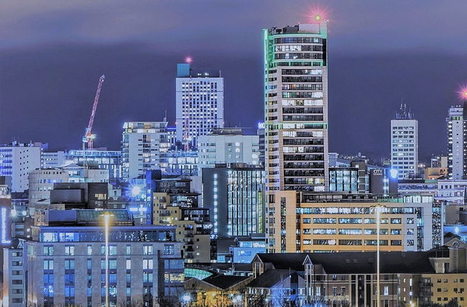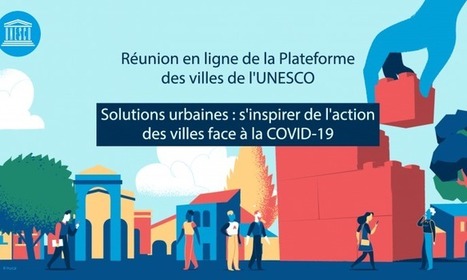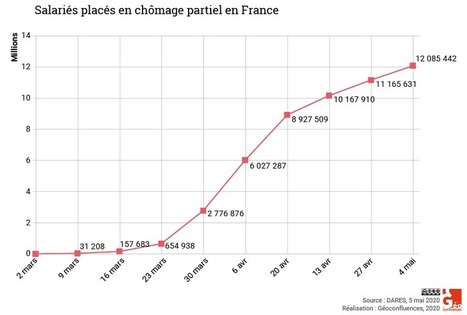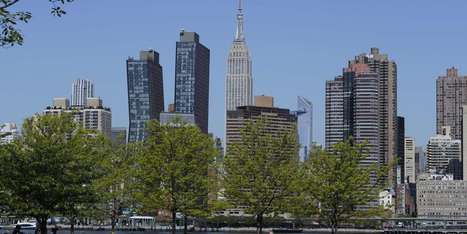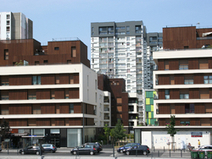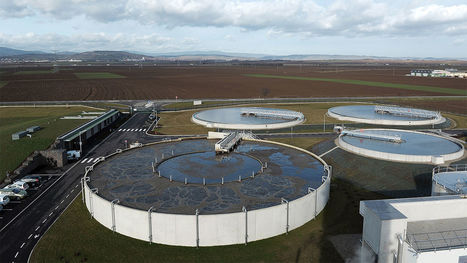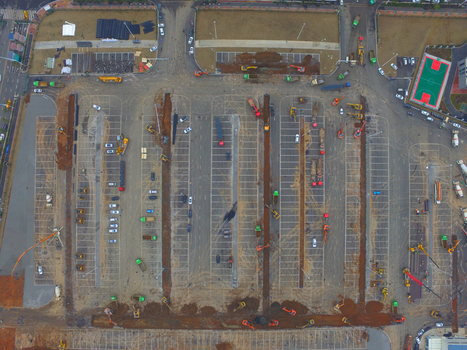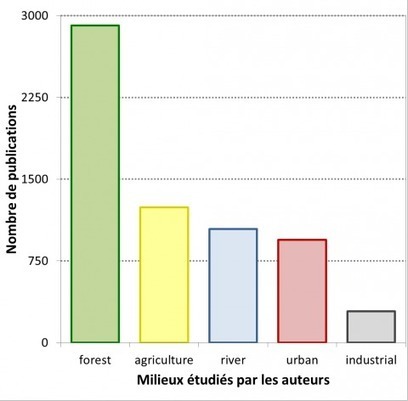 Your new post is loading...
 Your new post is loading...
Wuhan, Delhi, São Paulo, New York, Montréal… La COVID-19 a pris d’assaut les grandes villes du monde, dévoilant du même coup leurs failles. Des chercheurs et des acteurs municipaux ont profité du confinement pour penser la ville de demain.
In 'Metropolis,' historian Ben Wilson writes about the damage we've done to our city centers.

|
Suggested by
LIGHTING
|
BRIGHT LIGHTS, DISEASED CITIES estatements talks to leading Berlin architect, Tobias Nöfer, about how the current global pandemic may change our future cities. Paris’s famed city skyline is legacy of Baron Haussmann who, at the orders of Emperor Napoléon III, demolished medieval neighbourhoods between 1853 and 1870. Deemed overcrowded and unhealthy, they were replaced by wide avenues, parks and squares, fountains, aqueducts and, importantly, sewers. But was the primary driver health concerns of ones of military concern? As the immediate shock of the COVID-19 crisis subsides, the real estate industry is gradually turning its thoughts towards the future. What will the post COVID-19 urban landscape look like? How will the pandemic shape tomorrow’s cities? And what are the repercussions for building design? Tobias Nöfer, managing partner of Berlin architect firm, Nöfer Architekten, is better qualified than most to answer these questions. Nöfer was head of the “Planwerk Innenstadt” project for the redesign of Berlin’s historical centre. After studying architecture at the RWTH in Aachen and the ETH in Zurich, he worked in the offices of famous architects, such as Oswald Mathias Ungers and Hans Kollhof before starting his own firm in 1998 to work on urban design, architecture concepts and projects. Tobis is also the chairman of the board of the Architects and Engineers Association of Berlin (AIV). Here he talks to estatements about how he foresees COVID-19’s impact on our cities’ future. Hobrecht plans for Berlin also gave rise to crowded Mietkaserne, tenement blocks with backyard courtyards where little sunlight penetrated and where the scene of much of the city’s industry until the 1920s. Today, such courtyards are often the scene of trendy cafes, galleries and startups, such as at the Hackesche Hofe. Q: Disease and fear of disease have long since influenced the shape our cities. Famous examples include the changes Baron Haussmann made to Paris in the 1880s that remoulded its skyline and introduced sewers underneath its streets in response to cholera outbreaks. Similarly, London’s Victoria Embankment, the quintessential English promenade, was created by Sir Joseph William Bazalgette as part of a new and ambitious sanitation system after successive waves of dysentery, typhoid, and cholera had stricken the city, including one that claimed 10,000 lives. Do similar examples of cities that have been shaped by disease exist in Germany? James Hobrecht (1825-1902) remodeled Berlin based on a plan of 1862. Introducing sewerage to improve public health, his plans also saw vast sections of the city redeveloped to accommodate a projected size of 1.5 to 2 million inhabitants. Nöfer: It can’t be said that cities have been significantly shaped by disease – there have always been other major factors moulding cities. For example, during the Baroque period in Berlin, military issues were the main motivation behind building large city squares, such as Pariser Platz, Leipziger Platz, and Mehringplatz on the edge of the last tariff wall. But of course, the desire for a healthy city has always played a major role and led to innovation. In the second half of the 19th century, Berlin was significantly shaped by the plans of James Hobrecht, who, like Bazalgette in London, was primarily a hydraulic engineer focused on urban technology. The side effect of his efforts was the network of streets, squares and parks, which we still appreciate as part of a well-functioning city today. Hobrecht’s development also resulted in massive densification that led to the problem of dark rear courtyards, and as a result the modernity of the 1920s had to bid farewell to the centuries-old tradition of separating public from private spheres. Light, air and sun became the central themes of the modern city, although nowadays we find this anti-urban character problematic. “IT CAN’T BE SAID THAT CITIES HAVE BEEN SIGNIFICANTLY SHAPED BY DISEASE – THERE HAVE ALWAYS BEEN OTHER MAJOR FACTORS MOULDING CITIES.” Q: How is COVID-19 likely to change our cities? One would assume that the changes will not be as dramatic as a reshaping of the city skyline à la Haussmann or Bazalgette, but they could still be significant. How do you expect our cities to change in response? Nöfer: Historically, cities have only ever undergone slow change. The corona crisis may be prominent today, but it may only take two years before a vaccine is discovered, and that isn’t a long time. The backyard misery of the 19th century transformed our concept of cities far more than the Spanish flu in the 1920s. The spread of that virus had far less influence on urban planning than, for example, the rampant cases of rickets in 19th century Berlin caused by a lack of sunlight. Of course, the lockdown is changing our way of life in the short term because it makes us focus on our direct surroundings, which increases our awareness of our immediate living conditions. This is possibly a positive side effect of this collective hiatus, as urban space deserves more attention. This closer look at specific living conditions could have a significant impact on our approach to mobility, for example, which I find positive as all this flying back and forth couldn’t continue anyhow. In view of climate change, we can almost view this as a welcome moment – society certainly needed a kick in the pants to shake its apathy towards the looming climate catastrophe. “THE BACKYARD MISERY OF THE 19TH CENTURY TRANSFORMED OUR CONCEPT OF CITIES FAR MORE THAN THE SPANISH FLU IN THE 1920S.” Q. What challenges do architects face as a result of COVID-19, and how are they responding, if at all, at this point? I have seen that new design theories are emerging, and, according to Architectural Digest, many designers and architects anticipate the broad implementation of technologies such as voice-activated elevators, hands-free light switches, and entry to hotel rooms by means of mobile phones. Nöfer: Architects are obsessed by anything new and come up with a new theory for every event. The widespread introduction of new technology was already in full swing, irrespective of COVID-19. As I said, architecture and urban planning can’t undergo fundamental change within a few months or even years. Their development is based on human physiognomy and basic human behaviour, which only changes at an evolutionary rate – in other words, very slowly. On the other hand, fashion and design, for example, can change far faster. New items of clothing, such as masks, or social distancing requirements against the spread of COVID-19 will also trigger change. Q: What impact will COVID-19 and social distancing – as far as it is possible to tell at this point – have on the open-plan offices? What are the ramifications for building design, particularly in terms of building heights and skyscrapers? Nöfer: Even before the crisis, there were differing needs for office workplaces. Some employees needed separate offices to concentrate on their work and make confidential telephone calls, some needed group workspaces to collaborate as a team, while call centres and the like needed small cubicles with minimal space requirements. After two months of crisis, normality has mostly returned to the former two in Berlin because people are respecting social distancing and masks minimise the virus’s transmission. There has been a big shift towards working from home, although I think this is only a short-term trend. Many inner-city dwellers’ living rooms simply aren’t designed to be turned into an office. And many employees are getting cabin fever and want to return to their sociable workplaces. Despite all the digital possibilities on offer, misunderstandings arise all too easily, and many people still miss having a face-to-face conversation in the same room as someone else. The short-term nature of the current emergency and the contradictory trends we’re now seeing makes it impossible to predict the concrete impact on architecture and urban planning – anything else would be pure speculation. “SOCIETY CERTAINLY NEEDED A KICK IN THE PANTS TO SHAKE ITS APATHY TOWARDS THE LOOMING CLIMATE CATASTROPHE.” Q: The nature of work itself could undergo radical transformation. With the arrival of COVID-19 and enforced stay-at-home rules, companies have realised that it is possible for employees to work away from the office and remain productive for long periods of time. Is this likely to cause a huge shift, or will it be business as usual once restrictions are eased? Nöfer: COVID-19 significantly accelerated flexibility in the world of work. This change is not just a casual result of the crisis, but an acceleration of a process that was already underway. Even before the crisis, our employees were able to work from home, which helped us a lot when almost everyone was at home anyway. We’ve learned how to deal with constant video conferencing, but also recognised the advantages and the disadvantages of face-to-face conversation. By the time the crisis is over, we’ll have learned a lot that we would have otherwise only recognised later. Q: Would this be a good time to initiate a shift to second-tier cities, given that they have all the amenities of larger urban conglomerations without the density and hassle, and modern communications can enable professionals to work from home and quickly travel to office centres should this prove necessary? Nöfer: You could assume that is indeed the case. It’s also a nice idea, and the resulting decentralization and decrease in physical mobility would certainly be very welcome. But I don’t believe it will happen. Smaller cities can’t compete with the lure of big cities and their inordinately large number of attractions. It’s important to note that urban living has lost none of its appeal. The question of living in the “place to be” will remain an important factor. Back to Contents
La crise actuelle de la COVID-19 dans le monde suscite de nombreux changements dans les sociétés du XXIème siècle. Comment pouvait-on imaginer qu'une maladie issue du marché de Wuhan, en Chine, puisse devenir une réelle pandémie mondiale, menaçant les populations, quelque soit leur revenus ou...
" Reading the City " (Lire la ville) est un joli projet en ligne pour les amoureux des villes, de l'urbanisme et des voyages. La devise d

|
Suggested by
LIGHTING
|
Today's modern cities, from Denver to Dubai, could learn a thing or two from the ancient Pueblo communities that once stretched across the southwestern United States. For starters, the more people live together, the better the living standards.
Quelle ville pour demain et comment inventerons-nous le monde d'après ? Avec le web comme interface sur le monde, voici notre sélection de webinaires et conférences à voir et revoir pour les semaines à venir.
Chaque semaine, Courrier international explique ses choix éditoriaux et les débats qu’ils suscitent parfois dans la rédaction. La une de ce numéro est consacrée aux mégalopoles. Comment rendre les villes à nouveau vivables après la pandémie de Covid-19 ?
8 défis et quelques propositions pour que la distanciation physique durable ne nous fasse pas mourir de chagrin. S’il y a un élément du discours de dimanche soir d’Edouard Philippe qu’on peut saluer, c’est l’apparition de la notion de “distanciation physique” en lieu et place de la terrible et bien mal-nommée “distanciation sociale” jusque-là officiellement …
Pour faire face aux besoins de leurs habitants, les villes vont devoir développer leur compétitivité, concilier le développement et les exigences environnementales et, enfin, récréer un lien de confiance avec les populations.
Au moment où la Chine devient la première puissance économique mondiale à l’aune du Produit Intérieur Brut mesuré en parité de pouvoir d’achat, il n’est pas très étonnant de découvrir que la popula...
|
Cet atlas est l’œuvre du géographe Eric Verdeil, et de L’Atelier de cartographie de Sciences Po.Eric Verfeil est professeur des universités, chercheur au CERI (Centre de recherches internationales…...
Malgré le reconfinement, j’ai le grand plaisir d’annoncer la parution de l’Atlas des mondes urbains, aux Presses de Sciences Po. Il s’agit du deuxième opus de cette collection entamée par l’Atlas de l’Anthropocène.
In Leeds city centre, the coronavirus crisis has merely accelerated trends that have been unfolding for some time such as bank,cinemas, shops declining
La nature multidimensionnelle de la pandémie de COVID-19 a laissé une trace indélébile sur les villes du monde, soulevant des questions fondamentales concernant le développement urbain durable sur les plans social, culturel, économique et environn...
Géoconfluences, une publication à caractère scientifique pour le partage du savoir et pour la formation en géographie. Elle est proposée par la Direction générale de l'enseignement scolaire (Dgesco) et par l'École Normale Supérieure de Lyon (ENS de Lyon).
TRIBUNE. Mal conçue, la ville dense est un piège. Bien pensée, elle permet de répondre aux défis posés par les crises climatique et sanitaire, estime l’architecte new-yorkais Jeffrey Raven.
Le 17 mars 2020, alors que la France se confinait pour lutter contre la pandémie du Covid-19, près de 17 % des Franciliens quittaient leur domicile et l’Île-de-France pour s’établir en région 1 : mise au vert, recherche d'espaces ouverts et de nature ? De logements et d’espaces à vivre plus grands ? Regroupement familial (étudiants, jeunes actifs, célibataires) ? Peur des contacts générés par les centres urbains ?
By sampling sewage across greater Paris for more than 1 month, researchers have detected a rise and fall in novel coronavirus concentrations that correspond to the shape of the COVID-19 outbreak in the region, where a lockdown is now suppressing spread of the disease. Although several research groups have reported detecting coronavirus in wastewater, the researchers say the new study is the first to show that the technique can pick up a sharp rise in viral concentrations in sewage before cases explode in the clinic. That points to its potential as a cheap, noninvasive tool to warn against outbreaks, they say. “This visibility is also going to help us predict a second wave of outbreaks,” says Sébastien Wurtzer, a virologist at Eau de Paris, the city’s public water utility. Wurtzer and his colleagues posted the study, which has not been peer-reviewed, on the preprint repository medRxiv on 17 April. Sewers offer near–real-time outbreak data, because they constantly collect feces and urine that can contain coronavirus shed by infected humans. (Once excreted from the body, the virus degrades quickly, although scientists have found limited instances of infectious virus in fecal matter.) Polymerase chain reaction testing identifies fragments of RNA from SARS-CoV-2, the virus that causes COVID-19. Higher concentrations of virus in the wastewater corresponds to higher numbers of infected people who contribute to the sewer system. For the Paris study, Wurtzer and his colleagues sampled wastewater from up to five Paris-area plants twice a week between 5 March and 7 April. They noted “high concentrations” of viral RNA several days before 10 March, the first day that Paris recorded multiple deaths from COVID-19. Concentrations continued to rise a few days ahead of an acceleration in clinical cases and deaths in Paris. “We have a very clear curve that precedes the curve in numbers of clinical cases, and now with confinement, we see a flattening of that curve,” says Laurent Moulin, a study co-author and a microbiologist also at Eau de Paris. He estimates it took between a half a day and 3 days for the sewage to move from toilets to the treatment plants. Preprint available at medRXiv (April 17, 2020): https://www.medrxiv.org/content/10.1101/2020.04.12.20062679v1
Via Juan Lama
Au-delà des apparences, l'articulation métropoles-Covid-19 n'a rien d'évident. La diffusion très rapide du coronavirus à partir de Wuhan (Chine) par des connexions aériennes intercontinentales en Asie, en Europe et en Amérique du Nord illustre l'idée que la mondialisatio
Does the Wuhan Coronavirus concern us? Yes, it does. Beyond the rush for health cures, cities are seen to react by using both architecture an
Introduction Bien que fortement impactés par les activités humaines, les sols en milieu urbain sont capables de rendre des services écosystémiques essentiels à la viabilité des sociétés humaines. M...
|

 Your new post is loading...
Your new post is loading...
 Your new post is loading...
Your new post is loading...






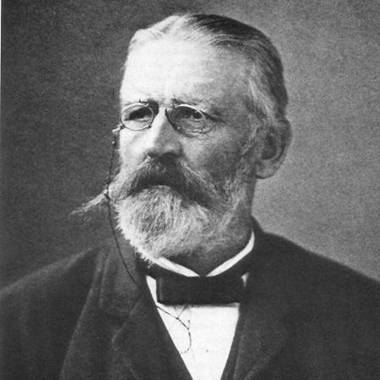
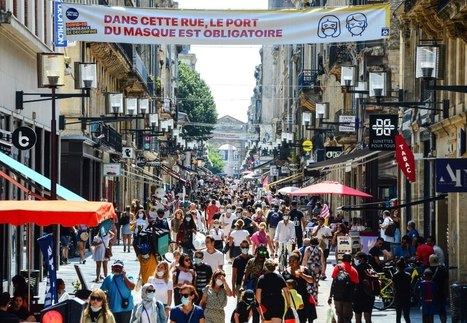



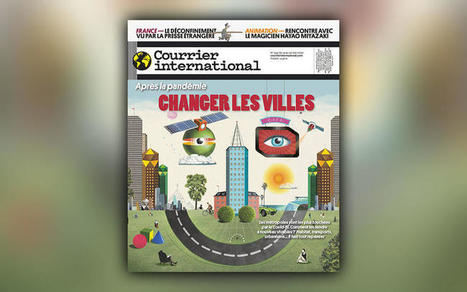
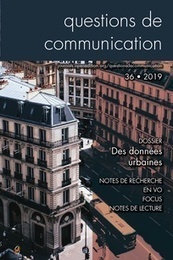
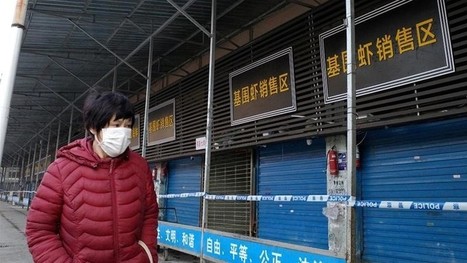
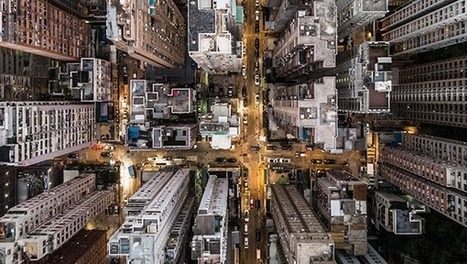
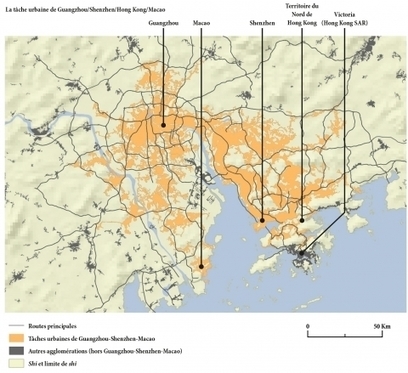
![[Parution] L’Atlas des mondes urbains | ICSU becoming ISC ... Biocluster | Scoop.it](https://img.scoop.it/Jv4FwJ6JZslPsWejZ1zRTzl72eJkfbmt4t8yenImKBVvK0kTmF0xjctABnaLJIm9)
